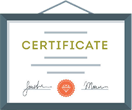Live Project Based Software Testing training in Mohali
 4.8 out of 5
based on 8966 ratings.
4.8 out of 5
based on 8966 ratings.
KVCH provide world class training in software testing in mohali . With the best infrastructure and high-tech technology , the project based training allows students and working professional to gain hands-on experience in Software Testing.
As the industry leaders , KVCH from the past 10 years has joined hands with many prestigious organization to create an environment for aspirants looking to innovate and influence the IT industry. We have expert team who guide the students and working professionals regarding various job opportunities in the market . We provide assistance and support to all KVCH students for placement. We have excellent placement records, and that has made us as the Best Software Testing training institute in Mohali , .
The course curriculum for Software tetsting is vast and ranges from basic to professional level . At KVCH , Software testing training program candidate gains knowledge about manual testing , SDLC , STLC , Fish Model , QTP Testing , Selenium, ATM testing , Database testing , Load Runner and many more. We make sure that every necessary topics in Software Testing is covered by our senior specialist so that later when candidates have to work on real live project , they are able to do it with ease.
Benefits

Accredited Curriculum

Learn from the Experts

Professional Certificate

Guranteed Career Growth

Placement Assistance

Earn a Valuable Certificate
Course Description
- 1. Introduction
- 1. Overviews of Information Technologies Industries
- 2. What is QA and QC?
- 3. IT Organization Process Standard
- 4. Why Software Testing?
- 5. Key Skills for Software Testing
- 6. Responsibilities of Software Testing
- 7. Principle of Software Testing
- 8. Cost of Defect
- 9. Psychologies of software testing
- 10. Project Vs Product
- 11. CMMI Level Vs SDLC Process
- 2. System Development Life Cycle
- 12. What is SDLC?
- 13. Why we Use SDLC Process?
- 14. Types of SDLC Process
- 14.1. Linear Sequential Model
- 14.2. Prototype Model
- 14.3. Incremental Model
- 14.4. Spiral Model
- 14.5. RAD Model
- 14.6. Fish Model
- 14.7. V Model
- 14.8. Agile Methodologies
- 14.9. DevOps Concept and Overviews
- 3. Software Testing Stages and Phases
- 15. What is Business Requirement and System Requirement Specification and Brief Explanation
- 16. Preventive Testing
- 16.1. Formal and Informal
- 16.2. Walkthrough
- 16.3. Inspection
- 16.4. Peer and Technical Overview
- 17. Glass box Testing
- 17.1. Component Testing
- 17.2. Integration Testing
- 18. Specification Based Testing
- 19. Expectation Based Testing
- 20. Acceptance Criteria and Testing
- 21. Release Criteria and Testing
- 22. Maintenance Criteria and Testing
- 4. System Test Life Cycle (STLC)
- 23. STLC Introduction
- 24. STLC Vs SDLC
- 25. Software Testing Strategies and Master Plan
- 26. Software Test Plan
- 27. Software Test Design
- 27.1. Create Test Scenarios
- 27.2. Create Test Cases
- 27.3. Black Box Testing Technique
- 27.4. BVA (Boundary Value Analysis)
- 27.5. ECP (Equivalence Class Portioning)
- 27.6. DT (Decision Table)
- 27.7. STD (State Transition Diagram Method)
- 27.8. DA (Defect Age)
- 27.9. OA (Orthogonal Array Process)
- 27.10. Regular Expression
- 27.11. Case Study
- 28. Software Test Execution Activity
- 5. Database Testing and Database Overviews
- 29. Introduction Database Testing
- 30. Why Database Testing
- 31. Concept of My SQL Database
- 31.1. Introduction SQL
- 31.2. TSQL Vs PSQL
- 31.3. SQL Languages
- 31.4. All Basic Concept of SQL
- 6. Defect Life Cycle
- 32. What is Defect?
- 33. How Many Types of Defect
- 34. Bugzilla Life Cycle
- 35. Bugzilla defect tracking Tools Review and Implementation
- 36. Defect Life Cycle
- 37. Manually Create Defect Report
- 7. Test Closer Activity
- 8. Test Summary Report Preparation
- 9. User Accepting Process
- 10. Why Automation?
- 11. Why Automation Necessary?
- 12. Selenium Introduction
- 13. Selenium RC Architecture
- 14. Selenium WebDriver Architecture
- 15. Selenium Locators
- 16. Selenium User Interaction
- 17. Selenium Synchronization
- 18. Selenium Webdriver API Handling
- 19. Alerts & Windows
- 19.1. Wait Commands
- 19.2. Advance Webdriver Waits
- 19.3. Switch Commands
- 19.4. Handling of Alerts, JavaScript Alerts and Popup Boxes
- 19.5. Handling I frame using Selenium WebDriver
- 19.6. Interact with Elements inside an I frame
- 20. Action & Robot Class
- 20.1. Drag and Drop in Selenium Webdriver
- 20.2. Mouse Hover action in Selenium Webdriver
- 21. Data Driven Approach
- 21.1. Download Apache POI
- 21.2. Add Apache POI Jars
- 21.3. Data Driven Framework (Apache POI – Excel)
- 22. Log4j Logging
- 21.4. Log4j Introduction
- 21.5. Download Log4J
- 21.6. Add Log4j Jar
- 21.7. Log4j LogManager
- 21.8. Log4j Appenders
- 23. TestNG Framework
- 23.1 TestNG
- 23.2 Install TestNG in Eclipse
- 23.3 TestNG Test Case
- 23.4 TestNG Test Suite
- 23.5 TestNG Annotations, Groups & OnDepends
- 23.6 TestNG Prioritizing & Sequencing
- 23.7 TestNG Reporters & Asserts
- 23.8 TestNG Parameters & Data Provider
- 23.9 TestNG Data Provider with Excel
- 23.10 Multi Browser, Cross Browser & Parallel Testing using TestNG
- 23.11 TestNG Listeners
- 24. Database Connections
- 25. Page Object Model
- 26. Modular Driven Framework
- 27. Data Driven Framework
- 28. User Defined Function
- 29. Object Repository
- 30. Hybrid Automation Framework
- 31. Keyword Driven Framework
- 34.1. Keyword Driven Framework – Introduction
- 34.2. Steps to Set up Keyword Driven Framework
- 34.3. Identify and Implement Action Keywords
- 34.4. Set Up Data Engine – Apache POI (Excel)
- 34.5. Use of Java Reflection Class
- 34.6. Set Up Java Constant Variables
- 34.7. Test Suite Execution Engine
- 34.8. Exception Handling
- 34.9. Test Result Reporting
- 34.10. Data Driven Technique
- 34.11. Framework for Manual Testers
- 32. Framework Design principles
- 34.12. Factory design principle in Selenium Tests
- 34.13. Object Repository using Properties file
- 34.14. Object Repository for Selenium using JSON